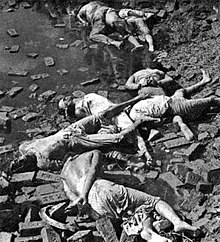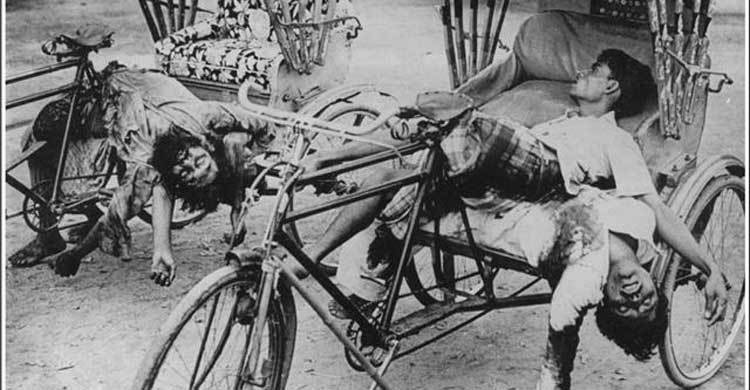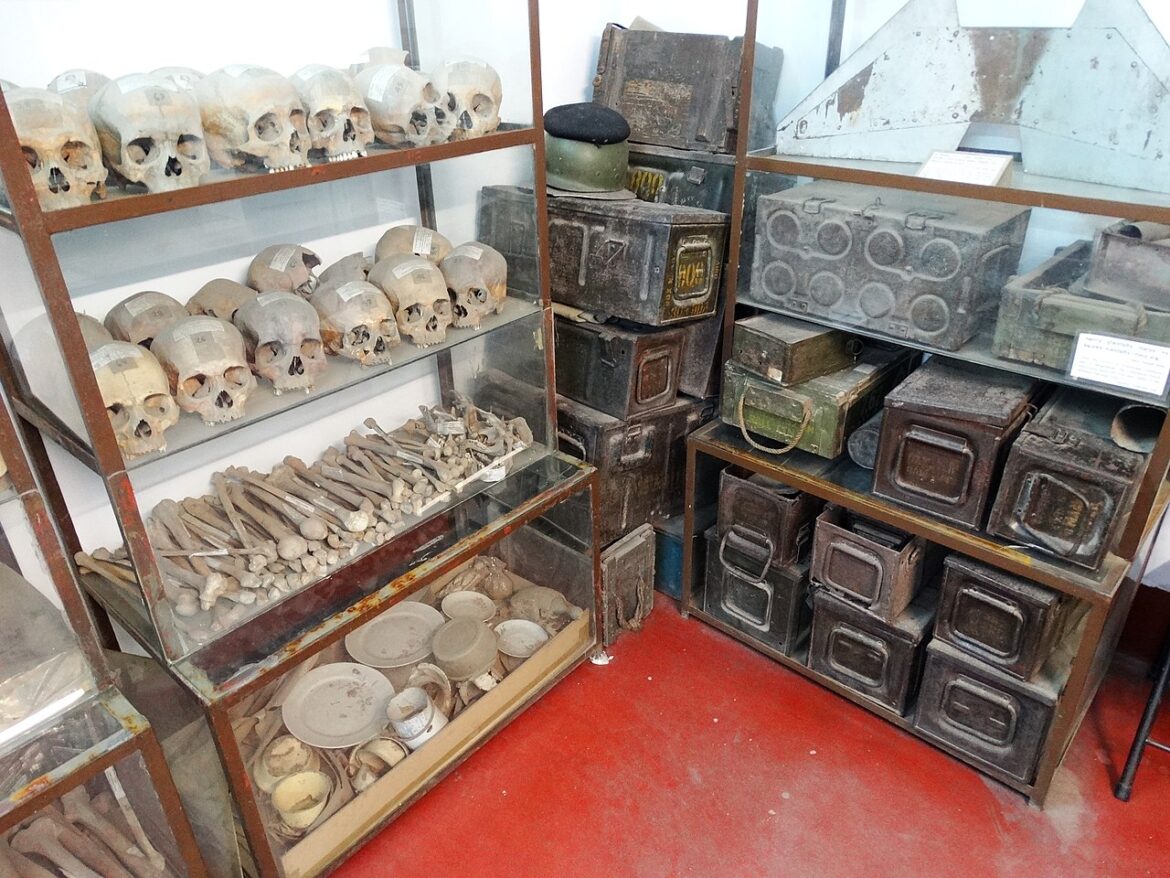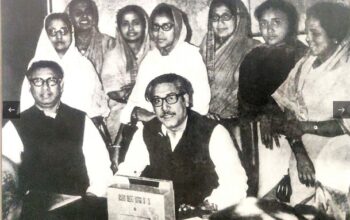Yahya Khan: “Kill three million of them and the rest will eat out of our hands”



Bangladesh Genocide Global Press Quotes
Operation Searchlight Pakistan Army planned secretly and operated “Operation Searchlight” to annihilate Bengali nationalism. The operation was suddenly launched on March 25, 1971 late night and led to the Bangladeshi Genocide of the merciless killing of the people of East Pakistan. But even this heinous Genocide did not stop Bangladesh’s birth as an independent country.
ABOUT GENOCIDE
Genocide is the most horrific crime inflicted on one group of people by another. Destroying or conspiring to destroy a classification of people because of their national, ethnic or religious identity constitutes the crime of genocide.
In his book Axis Rule in Occupied Europe, Raphäel Lemkin – a Polish lawyer initiated the very word “genocide” in 1944. The word consists of the Greek prefix ‘genos’, meaning race or tribe, and the Latin suffix ‘cide’, meaning killing. Lemkin developed the term not only in response to the Nazi policies of systematic murder of Jewish people during the Holocaust, but also in response to previous instances in history of targeted actions aimed at the destruction of particular groups of people. Later on, he led the campaign to have genocide recognized and codified as an international crime.
Raphael Lemkin
The definition of the crime of genocide as contained in Article II of the Genocide Convention was the result of a negotiating process and reflects the compromise reached among United Nations Member States in 1948 at the time of drafting the Convention. Genocide is defined in the same terms as in the Genocide Convention in the Rome Statute of the International Criminal Court (Article 6), as well as in the statutes of other international and hybrid jurisdictions.
After endorsing that genocide is a crime under international law whether committed in time of peace or war, the 1948 convention defines genocide as “any of the following acts committed with intent to destroy in whole or part, a national, ethnical, racial or religious group, as such : killing members of the group, causing serious bodily or mental harm to members of the group; deliberately inflicting on the group conditions of life calculated to bring about its physical destruction in whole or in part; imposing measures intended to prevent births within the group; forcibly transferring children of the group to another group.
GENOCIDE IN BANGLADESH
The mass killings and brutalities by Pakistan Occupation Force and their local allies taken place in Bangladesh (then East Pakistan) back in 1971 constituted genocide. Local allies consisted of the pan-Islamic political organizations such as Jamaat e Islam, Nizam e Islam and Muslim League; supporting platform like Peace Committee; supporting force like Razakar; and killer forces like Al-Badr and Al Shams.
In an attempt to crush forces seeking independence for East Pakistan, the West Pakistani Military regime unleashed a systematic campaign of mass killing millions of Bengalis, and likely succeeded in doing so. The partition of India in 1947 was one of the great tragedies of the century. Hundreds of thousands of people were killed in sectarian violence and military clashes, as Hindus fled to India and Muslims to Pakistan – though large minorities remained in each country.
Since Pakistan was formed, vested quarter of West Pakistan remained restless to discriminate East Pakistanis in all respects. Military rule governed almost all through the Pakistan regime. Contrarily, the Bengalis turned back and protested against military rule, and for a society free from discriminations of all sorts.
Catastrophic floods struck Bangladesh in late 1970, and the regime was widely seen as having ignored its relief duties. The disaster gave further impetus to Awami League, led by Sheikh Mujibur Rahman. Mujib demanded regional autonomy for East Pakistan, and an end to military rule.
In national election held in December of 1970, the League won a landslide victory across Bengalee territory. But President Yahya Khan backed by the vested quarter of West Pakistan remained reluctant in handing over power to Mujib. Instead of formation of the Mujib led government, genocide was launched on 25 March, 1971 that lasted for nine long months causing three million people brutally murdered, violating nearly 0.4 million women, and forcing ten million people take refuge in India. Bengali women were targeted for sexual assault and rape/murder from the earlier days of the Pakistani genocide.
Moreover, another heinous act perpetrated by the Jamaat and their associates during the liberation war of 1971 was the formation of killing squads named Al-Badr and Al-Shams Bahini with support from Pakistani General Rao Forman Ali. These killer forces hatched one of the most despicable conspiracies in human history, that is, “a blue-print entailing the elimination of the intellectuals”. This murderer gang conducted an abominable rampage of killing on the great “pride” sons of the then East Pakistan known as intellectual killing, just prior to their formal defeat and surrender to the liberation forces.
BANGLADESH GENOCIDE IGNORED
In the 1970s, two Asian genocides took place – one in Bangladesh (then East Pakistan) during 1971, and another in Cambodia during 1975 – 1979.
In March 1971, the Pakistani army launched a campaign to repress the independence movement of Bengalis in the eastern half of the geographically separated nation. The campaign of murder, rape, and pillage that continued until December 1971 caused 1 to 3 million deaths.
In the same decade, Cambodia experienced horrifying Khmer Rouge regime that toppled down the United States–backed Lon Nol government in April 1975. The new communist regime continued with extreme brutalities until January 1979 causing at least 1.5 million Cambodians.
It is unfortunate that the West paid very different level of attention to these genocides despite the two events experienced almost similar death tolls (7 digits).
According to the International Commission of Jurists (ICJ), this campaign of genocide involved
. . . the indiscriminate killing of civilians, including women and children and the poorest and weakest members of the community; the attempt to exterminate or drive out of the country a large part of the Hindu population; the arrest, torture and killing of Awami League activists and students, professionals, business men and other potential leaders among the Bengalis; the raping of women; the destruction of villages and towns.1
Archer Blood – the Consul General of US Consular Office at Dacca and other concerned claimed the massacre being on at that time in East Pakistan as ‘selective genocide’. Right after few weeks, Anthony Mascarenhas, a member of the journalist team assigned by Yahya Khan, came to a conclusion after visiting different places in East Pakistan that whatever happening in the territory under question is nothing but genocide.
In his book, Pyne (1973) describes scenes of systematic mass slaughter around Dacca that are strikingly similar to the case studies of genocide in Armenia and Nanjing massacre. Scholars like Rummel (1994) Kuper (1983) claimed Bangladesh case as genocide that formally lasted until Pakistani forces and their allies surrendered on 16 December, 1971. East Pakistan gained independence as the new nation of Bangladesh shortly thereafter.
Although Bangladesh received intense media coverage in 1971, there has been little scholarly interest in the question of genocide since that time despite there is substantial evidence from a variety of sources to indicate that a genocide did indeed occur.
Genocide
বাংলাদেশের মাটিতে ১৯৭১ সালে যে নির্বিচার গণহত্যা শুরু হয়, তার অন্তর্ভুক্ত ছিল টার্গেট কিলিং, ধর্মভিত্তিক নিধন, জাতিগোষ্ঠীভিত্তিক নির্মূল, বেছে বেছে প্রগতিশীল ব্যক্তি নিধন। ওই সময় ‘জোনোসাইডাল রেপ’, ‘এনফোর্সড মাইগ্রেশন’, পরিকল্পিত গুম ইত্যাদি অপরাধ হয়েছে। সবচেয়ে বেশি হয়েছে যুদ্ধের প্রকৃত লক্ষ্যের বাইরে সাধারণের ওপর পরিকল্পিত ও অপরিকল্পিত আক্রমণ- নিবির্চার হত্যা তথা যুদ্ধাপরাধ এবং Crimes against humanity of murder.
২৫ gvP© থেকে ১৬ ডিসেম্বরের তারিখ পর্যন্ত mgqKv‡j পাকিস্তান সেনাবাহিনী বাঙালি নিধনে ৯ মাসব্যাপী বর্বর গণহত্যা পরিচালনা করে। ‘অপরাশেন সার্চলাইট’-এর নীলনকশায় ঢাকার চারটি স্থান পাকিস্তান সেনাবাহিনীর মূল লক্ষ্য ছিল- বঙ্গবন্ধুর বাসভবন, ঢাকা বিশ্ববিদ্যালয় ক্যাম্পাস, রাজারবাগ পুলিশ লাইন এবং তৎকালীন পিলখানা (ইপিআর)।
ঢাকার চারটি স্থান ছাড়াও রাজশাহী, যশোর, খুলনা, রংপুর, সৈয়দপুর, কুমিল্লা, সিলেট ও চট্টগ্রাম ছিল ‘অপরাশেন সার্চলাইট’-এর আওতাভুক্ত wQj।1971 mv‡ji GB গণহত্যা বিশ্বের ইতিহাসে বিরল এক ঘটনা। পৃথিবীi A‡bK দেশ স্বাধীন হয়েছে, কিন্তু এভাবে রক্ত দিয়ে,cy‡iv জাতি এক কাতারে দাঁড়িয়ে সশস্ত্র জাতিতে রূপান্তরিত হয়ে রক্তক্ষয়ী যুদ্ধ করে ৩০ লক্ষাধিক প্রাণ আর ৪ লক্ষাধিক মা-বোনের আত্মত্যাগের বিনিময়ে ৯ মাসে মহান বিজয় অর্জন- মানবজাতির ইতিহাসে GK weij NUbv! নারী নির্যাতনের ঘটনা না জানলে আসলে পাকিস্তানি বাহিনীর নিপীড়নের মাত্রা বোঝা যায় না।
1. http://bn.banglapedia.org/index.php/গণহত্যা,_১৯৭১
3. https://www.bbc.com/news/world-asia-16207201
eB: বাংলাদেশে পাকিস্তানিদের গণহত্যা ও নারী ধর্ষণ
‡jLK: তপন কুমার দে
cÖKvk: 2014
c„ôv:
“১৯৭১ সালের ১০ই ডিসেম্বর ভারতীয় সেনাবাহিনীর ক্যাপ্টেন বিক্রম সিং ক্ষিপ্র গতিতে গাড়ি চালিয়ে সাতক্ষীরার দিকে যাচ্ছিলেন। তার সাথে স্বাধীন বাংলা বেতার কেন্দ্রের মূসা সাদিকসহ অন্য কয়েকজন। হঠাৎ মাহমুদপুর ঘোনার মাঝামাঝি স্থানে তাঁর গাড়ির সামনে এসে দাড়ায় তিন কৃষক ও দুই বালক। যুদ্ধাবস্থার মধ্যে আচমকা এই ঘটনায় সতর্কতার সাথে গাড়ি থামিয়ে ক্যাপ্টেন বিক্রম সিং জানতে পারলেন ঘটনা – কাছের একটি মসজিদে পাকিস্তানী খান সেনারা ঘাঁটি করে কয়েক মাস থেকে তাদের এলাকার ১১টি মেয়েকে আটকে রেখেছে। এরা মৃত না জীবিত তার কোন খবর তারা পাচ্ছে না।
সঙ্গে সঙ্গে ক্যাপ্টেন বিক্রম সিং তার ফোর্স নিয়ে মসজিদের দিকে যান এবং কিছু দূর থেকে গুলি ছোঁড়েন, পাল্টা জবাব না পেয়ে তিনি মসজিদের কাছে গিয়ে মেয়েদের কান্নার শব্দ শুনতে পান। সাথে সাথেই তিনি বাঙালিদের ডেকে বললেন, সেখানে পাকিস্তানি সৈন্য নেই। এ কথা শুনে লোকজন হুড়মুড় করে মসজিদে ঢুকে দেখেন তাদের ১১ জন কন্যা মসজিদের মধ্যে বিবস্ত্র অবস্থায় একে অপরকে ধরে লজ্জা নিবারনের চেষ্টা করছে, আর অঝোরে কাঁদছে। পাক সেনারা কোন সময় যে এখান থেকে চলে গেছে তা তারা জানেই না।
ক্যাপ্টেন বিক্রম সিং শিশুর মত কেঁদে ওঠেন। কাঁদতে কাঁদতে নিজের মাথার পাগড়ি খুলে- পাশের লোকদের হাতে তুলে দিয়ে চোখ মুছতে মুছতে দৌড়ে চলে যান গাড়িতে।”
cwÎKv: বাংলাদেশ অবজারভার
cÖKvkKvj: ১১ ফেব্রুয়ারি ১৯৭২
wk‡ivbvg: দিনাজপুরের টিঅ্যান্ডটি অফিসে এক নির্যাতন কক্ষের মেঝেতে ৩ ইঞ্জি পুরু জমাট বাঁধা রক্ত
c„ôv:
“একটি টর্চার সেলের মেঝেতে যখন ১০০০০ বাঙালিকে নির্যাতনের পর ৩ ইঞ্চি পুরু রক্ত জমাট বেঁধে যায়। দেয়ালে-জানালায়-সিলিং এ যখন শুকনো রক্ত লেপ্টে থাকে। তখন সহজেই বোঝা যায় সশস্ত্র প্রিডেটর জন্তু পাকিস্তান সেনাবাহিনীর নৃশংস রক্তারক্তির প্রিডেটর অ্যান্ড প্রে খেলা যেকোন মানুষের ভেতরেই স্নায়বিক অসুস্থতা তৈরি করবে।
হোক সে একজন কার্ডিয়াক সার্জন, যার অসংখ্য বাইপাস সার্জারীর অভিজ্ঞতা আছে কিংবা একজন ফরেনসিক ডাক্তার, লাশকাটার ঘরে যার অহরহ যাতায়াত। ইস্পাত স্নায়ুর পরীক্ষা দিতে হবে তাদেরকেও।
৩০ লক্ষাধিক মানুষ যে মহান মুক্তিযুদ্ধে শহীদ হয়েছে তার প্রমাণ বহন করছে তৎকালে প্রকাশিত আন্তর্জাতিক পত্রিকাগুলো। অস্ট্রেলিয়ার পত্রিকা হেরাল্ড ট্রিবিউনের রিপোর্ট অনুসারে ২৫ মার্চ রাতে শুধু ঢাকা শহরেই ১ লাখ লোককে হত্যা করেছিল পাকবাহিনী।
গিনেস বুক অব ওয়ার্ল্ড রেকর্ডস’-এ
বাংলাদেশের হত্যাযজ্ঞকে বিশ শতকের পাঁচটি ভয়ংকর গণহত্যার অন¨তম বলে উল্লেখ করা হয়েছে।
টাইম’ ম্যাগাজিনের
ড্যান কগিন- যিনি মুক্তিযুদ্ধের প্রত্যক্ষদর্শী সাংবাদিক, একজন পাকিস্তানি ক্যাপ্টেনকে উদ্ধৃত করে লিখেছেন,
‘We can kill anyone for anything. We are accountable to no one.’
বিশ্বখ্যাত এই পত্রিকাটির একটি সম্পাদকীয় মন্তব্য ছিল,
‘It is the most incredible, calculated thing since the days of the Nayis in Poland.’
Encyclopedia Americana এবং National Geographic Magazine-এ
এসব রিপোর্টে লেখা আছে,
বাংলাদেশের মাটিতে পাকিস্তান বাহিনীর নিষ্ঠুরতা ছিল দ্বিতীয় বিশ্বযুদ্ধে পোল্যান্ডে নাজি বাহিনীর বর্বরতার চেয়েও ভয়াবহ।
গণহত্যা সম্পর্কে পাকিস্তানি জেনারেল রাও ফরমান আলী তার ডায়েরিতে লিখেছেন,
‘paint the green of East Pakistan red’
cwÎKv: হেরাল্ড ট্রিবিউন (মার্কিন যুক্তরাষ্ট্র)
cÖKvkKvj: 1Ryb 1971
c„ôv:
তারিখে লিখেছে, ‘পাকিস্তানের গণহত্যা থেকে রেহাই পেতে লাখ লাখ উদ্বাস্তু মুসলমান এবং অন্যরা স্রোতের মতো ভারতে চলে আসছে।’
মুক্তিযুদ্ধ শুরুর এক মাস পর ২৬ এপ্রিল নিউজউইক লিখছে, ‘ইসলামাবাদ হাইকমান্ডের নির্দেশে সৈন্যরা পরিকল্পিতভাবে শিক্ষার্থী, প্রকৌশলী, চিকিৎসক এবং নেতৃত্ব প্রদানে সম্ভাবনাময় এমন সব লোককে পাইকারি হারে হত্যা করছে।’
eB: Massacre
‡jLK: ievU© পেইন
cÖKvkKvj: 1973
Yahya Khan: “Kill three million of them and the rest will eat out of our hands”.
৮১তে জাতিসংঘের এক রিপোর্টে উল্লেখ করা হয়
‘Among the genocides of human history, the highest number of people killed in lower span of time is in Bangladesh in 1971. An average of 6000 (six thousand) to 12000 (twelve thousand) people were killed every single day. …This is the highest daily average in the history of genocides…’.
eB: ক্রিয়েশন অব বাংলাদেশ : মিথস্ এক্সপ্লোডেড
‡jLK: জুনায়েদ আহমেদ (cvwK¯Ívb)
cÖKvkKvj: †deªæqvix 2017




